Farnsworth House
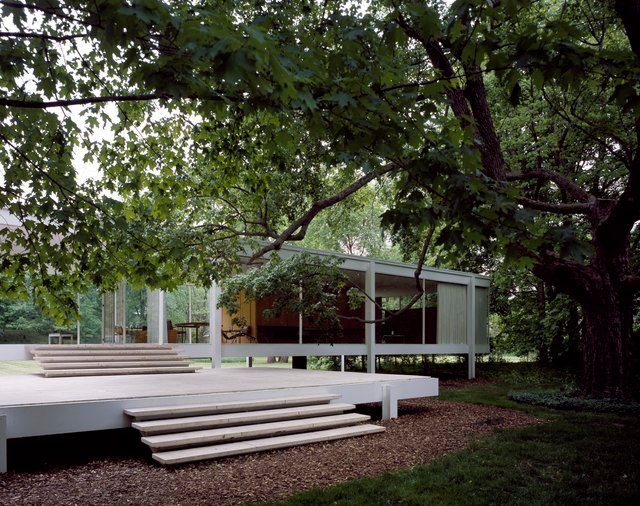
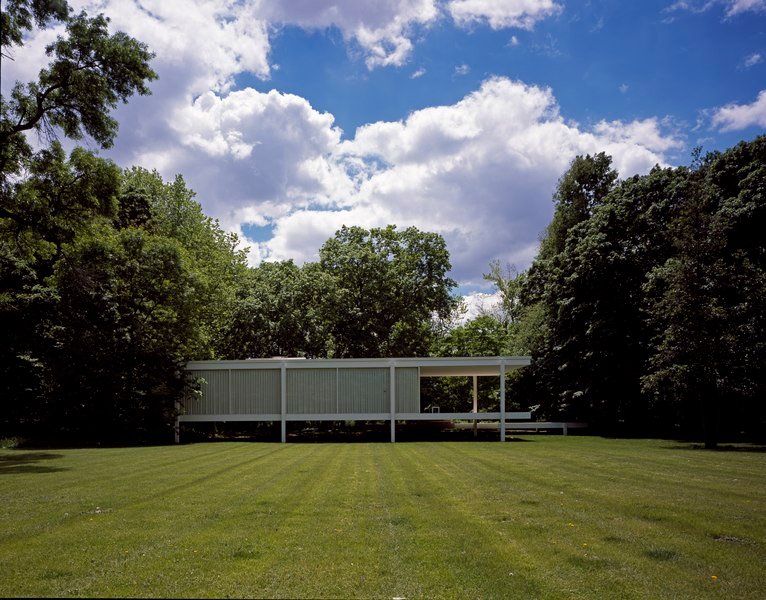
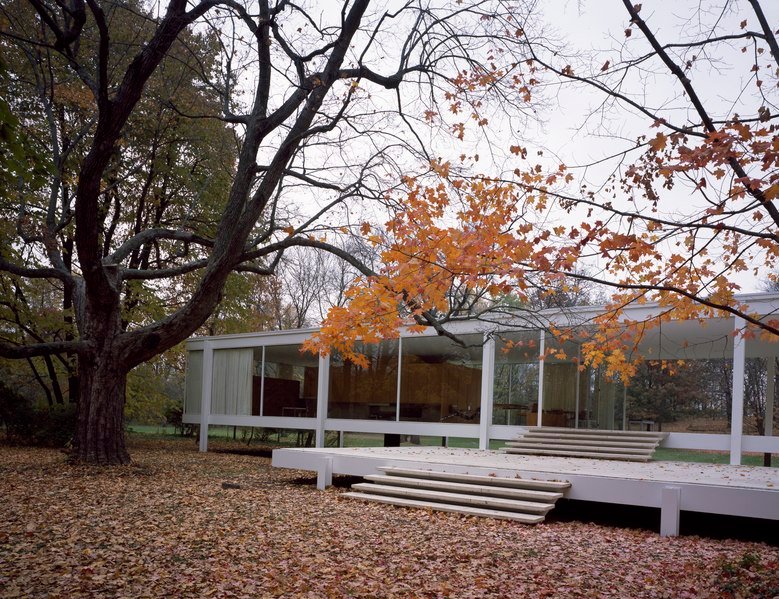
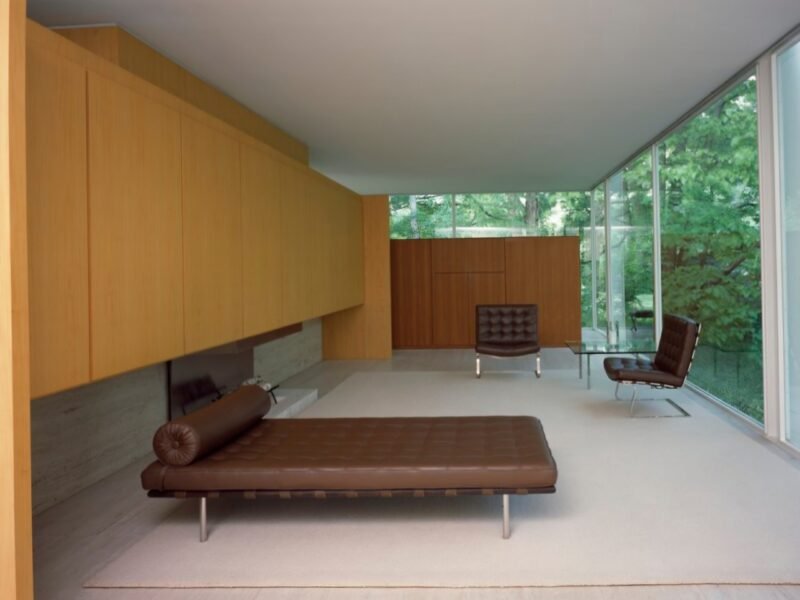
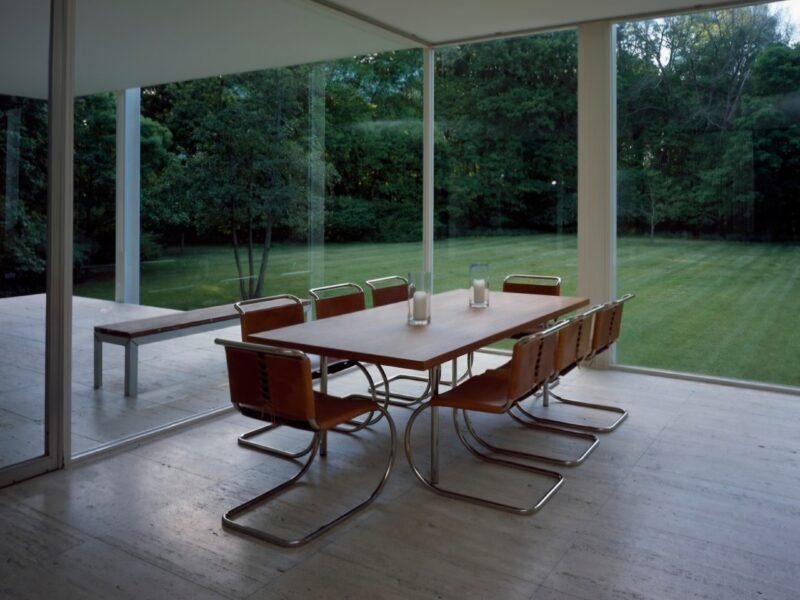
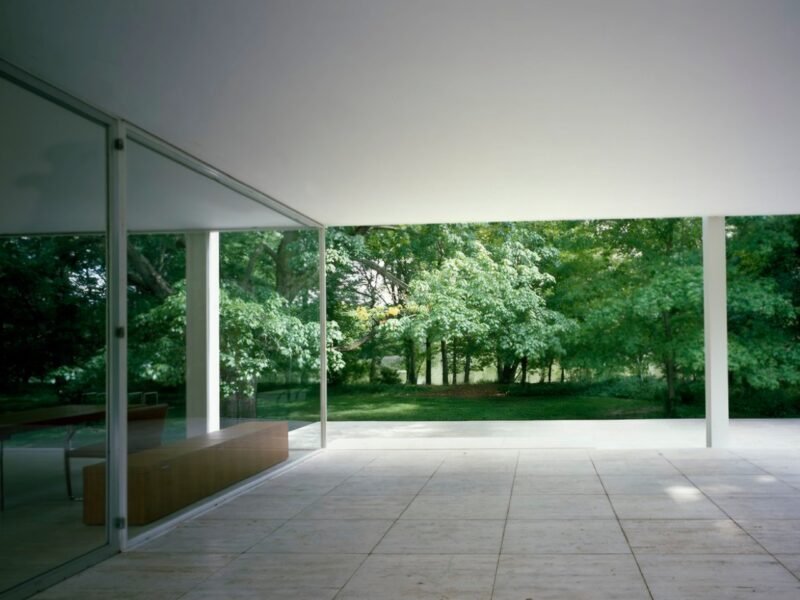
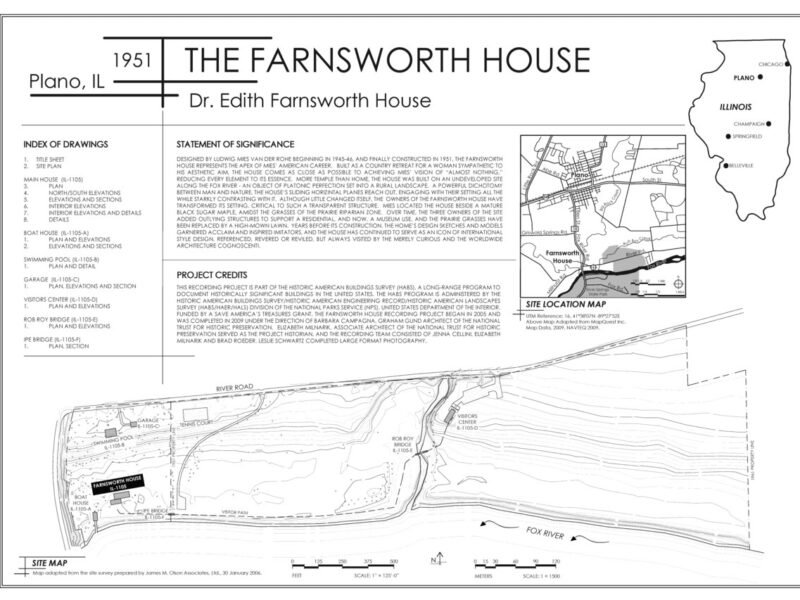
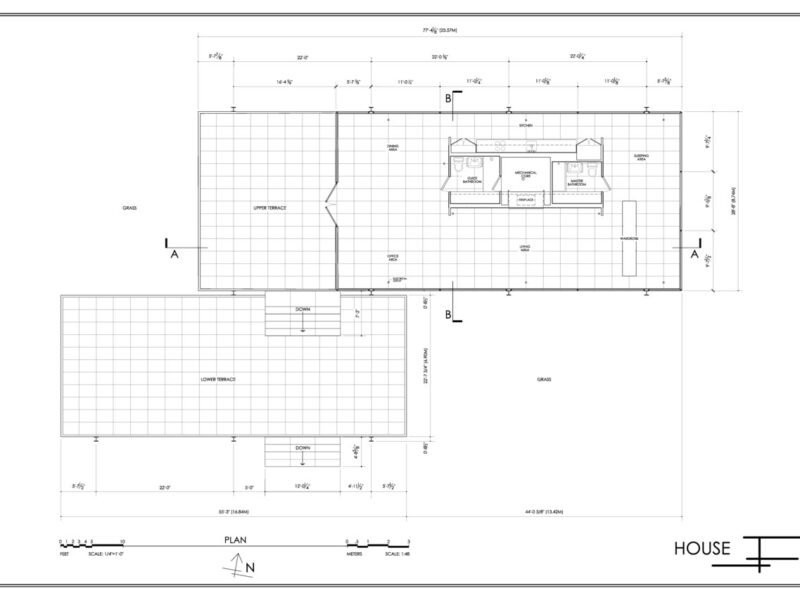
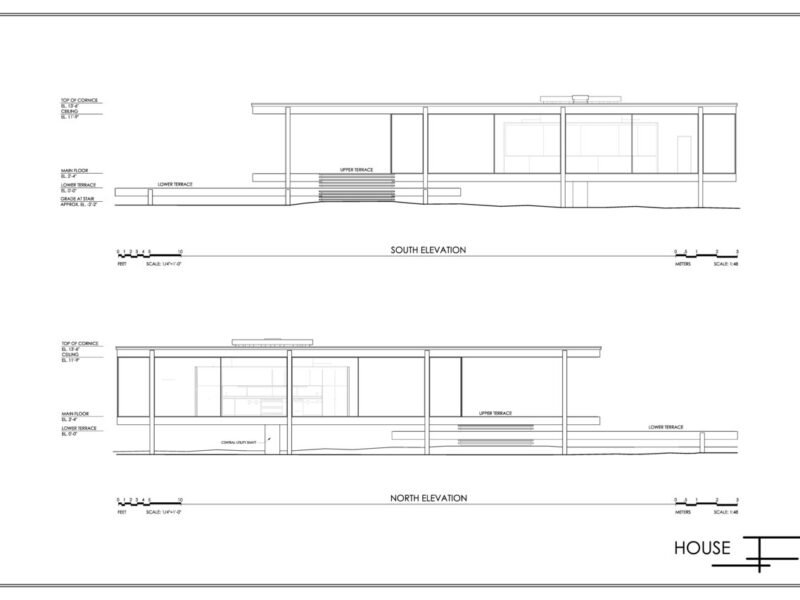
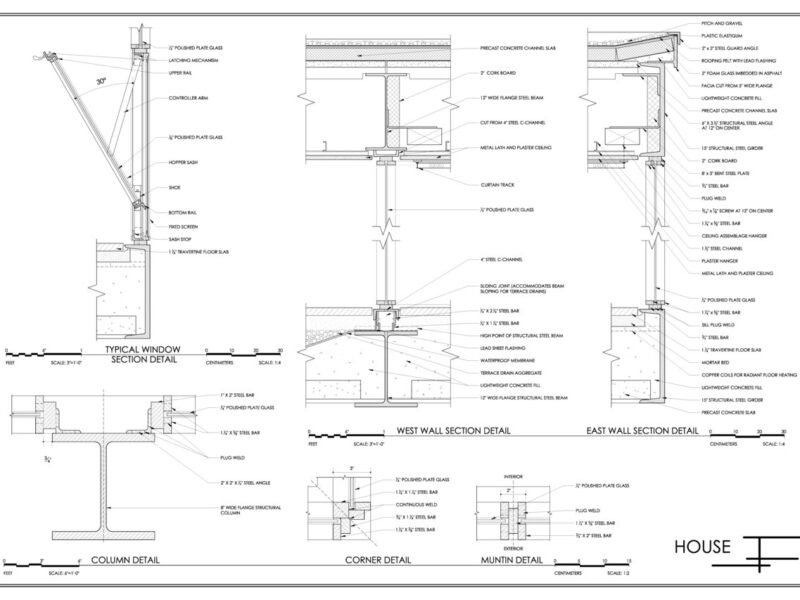
Overview
The Farnsworth House is one of the most iconic works of modern architecture, designed by Ludwig Mies van der Rohe, a pioneer of the International Style and one of the most influential architects of the 20th century. Commissioned in 1945 and completed in 1951, the house was intended as a private weekend retreat for Dr. Edith Farnsworth, a prominent Chicago physician and intellectual.
This house embodies Mies’s architectural ideology of “less is more” — a philosophy rooted in minimalism, functional clarity, and the honest use of materials.
Design and Structure
The Farnsworth House is a one-room, open-plan glass pavilion raised 1.5 meters (5 feet) above the ground on eight steel columns. The structure is incredibly simple in form but radical in its concept — a glass box that invites nature in while providing shelter and structure.
-
The house measures approximately 1,500 square feet (140 m²).
-
Its steel frame is painted white, contrasting with the clear glass walls and travertine floors.
-
The entire house rests on two rectangular slabs (floor and roof), with minimal interior partitions.
The architectural language is clean, horizontal, and elemental, revealing Mies’s mastery in proportion, material, and precision.
Relationship with Nature
One of the most striking aspects of the Farnsworth House is its deep connection with the landscape. Located on a wooded site along the Fox River, the glass walls eliminate any clear boundary between interior and exterior. This transparency transforms the house into a living frame of the changing seasons — the structure becomes one with its natural surroundings.
Mies deliberately designed the house to respect and highlight nature, not dominate it. There are no curtains or heavy partitions — privacy is replaced with openness, and shelter is achieved through lightness and elevation.
Philosophy and Influence
The Farnsworth House is not just a house — it’s a philosophical statement. Mies aimed to create universal space — a free-flowing environment that transcends traditional boundaries of architecture. By removing excess, he revealed the essence of form, material, and spatial experience.
This approach would influence generations of architects, from modernists to contemporary minimalists. The house has become a symbol of architectural purity, often studied in schools as a prime example of the modernist ideal.
Controversy and Legacy
Despite its beauty, the project was not without conflict. A dispute between Mies and Dr. Farnsworth emerged over budget overruns and functionality. Farnsworth later criticized the house for being aesthetic over practical, particularly regarding privacy and comfort.
Nonetheless, the Farnsworth House is now celebrated as a masterpiece, preserved by the National Trust for Historic Preservation and open to the public. It has survived multiple floods and remains a powerful reminder of Mies van der Rohe’s architectural vision.
Recognition
-
Considered one of the greatest residential buildings of the 20th century
-
Cited as a precursor to countless glass-and-steel structures around the world
-
Nominee for UNESCO World Heritage status
-
Inspires architects, designers, and artists globally to this day